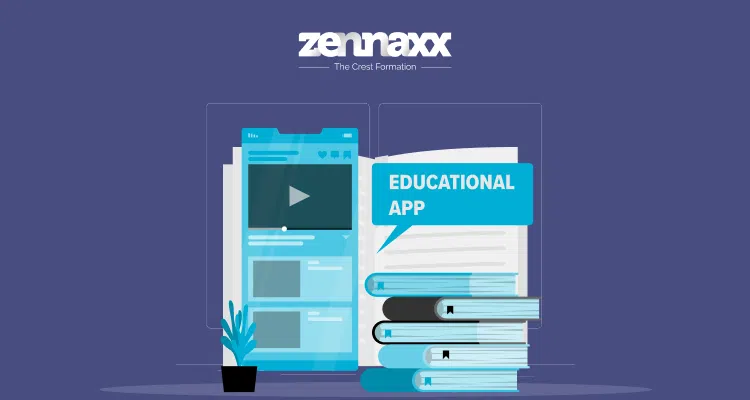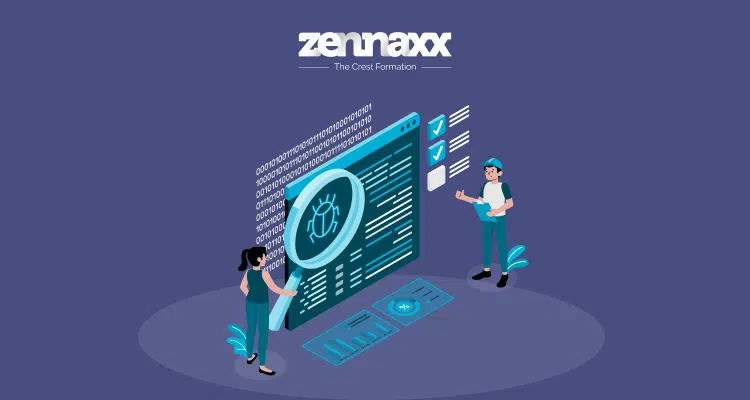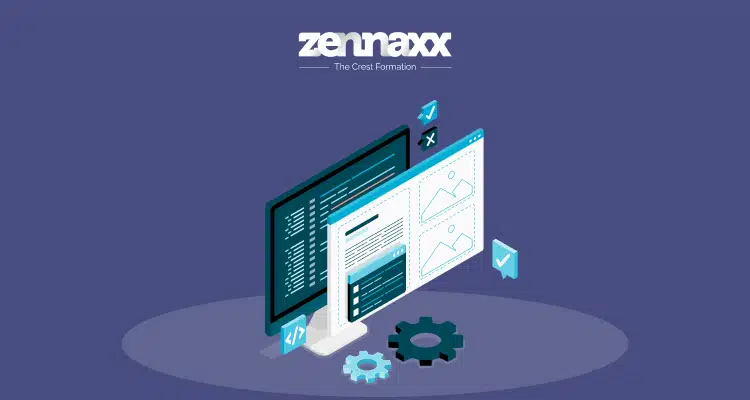Many developers think that Agile and Scrum are the same but differ. Agile is a general framework that covers various project development methods in smaller steps. Scrum is a specific Agile methodology with clear rules and roles.
By being aware of their differences, you can select the most effective strategy for their projects and organizations.
This blog offers valuable records to help you determine whether Agile vs Scrum suits your commercial enterprise goals or not.
We must first identify Agile and Scrum to comprehend their differences.
What is Agile, vs what is Scrum?
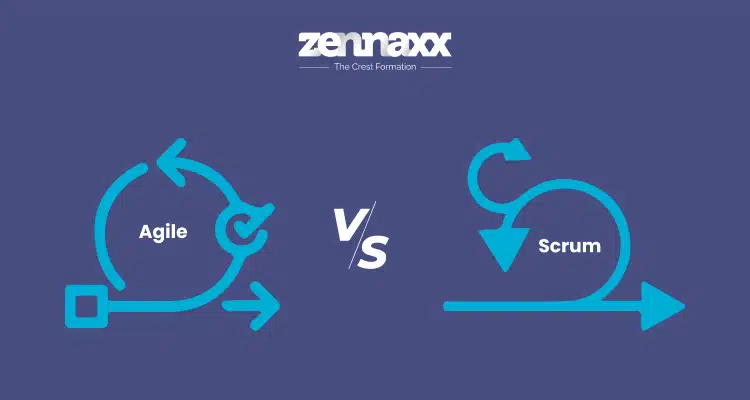
What is Agile?
Agile is a challenge control strategy focusing on reaching an aim through small, continuous steps.
Agile initiatives include handing over smaller sections of work in quick time intervals as opposed to a single significant launch or monitor.
This approach permits groups to cut fees and inefficiencies while lowering prices and adapting to modifications.
A specific method or framework is required to implement Agile principles in a company or project.
The most common is Scrum, but others include Kanban, the Crystal Method, Extreme Programming, and various combinations.
Based on the Agile Manifesto’s four guiding principles, the Agile philosophy is:
- People and collaboration over processes and tools
- Producing functional products over extensive documentation
- Working closely with customers rather than just focusing on contracts
- Adapting to change rather than strictly following a plan
Agile was first implemented within the software development industry, but it is now widely used in many sectors, including generation, marketing, layout, finance, and even construction.
Agile undertaking control strategies are presently being used in many industries that previously employed conventional mission control techniques.
The founding of Agile
Agile was officially founded in 2001 when 17 software development project managers met in Utah’s Wasatch Mountains.
It was cold in February, but they banded together to develop principles they believed would improve organizational teamwork and community.
This gathering produced the Agile Manifesto, which includes four values and twelve principles.
Agile is now used in various industries and teams across multiple sectors, not just software development. Its principles have gained popularity because of their adaptability and effectiveness in project management.
Ready to take the next step in your software development journey?
We’re here to help! Reach out to us today by clicking here to contact our team. We’re eager to hear from you and support your software development endeavors.
When you should use Agile
Agile is good for ongoing tasks and people where information may alternate as the work progresses.
It is remarkably great for industries that enjoy common or unpredictable modifications, as well as groups growing new products.
Agile’s flexibility permits groups to conform and modify as desired.
Traditional assignment management styles, such as Waterfall, can be more appropriate for tasks with strict constraints, such as set deadlines or fixed budgets.
The Waterfall is helpful for initiatives and occasion-making plans because everything should be deliberate in advance of time to ensure clean and final results.
What is Scrum?
Scrum is a method below the Agile technique, designed for environments wherein trade is likely.
In Scrum, paintings are split into short cycles called “sprints” that commonly last one to 4 weeks. Each dash builds at the remaining, and teams work on obligations in small, incremental steps.
Scrum teams are usually small, with 3 to nine humans, such as a Scrum Master who courses the crew and a product proprietor who manages the product.
The group remains in steady communication with each other and stakeholders for remarks and to alter plans as wished.
Scrum is based on three key pillars:
- 1. Transparency: Everyone involved can access information about the project’s progress and goals.
- 2. Adaptation: The project and tasks can change to meet new priorities.
- 3. Inspection: The team regularly reviews and improves the product and the work process.
Scrum is based on a set of core values that guide its project management methodology.
Courage empowers team members to face complex challenges and make critical decisions.
Focus allows the team to focus on their work and the specific tasks within each sprint. Commitment ensures dedication to the team’s goals.
Respect entails appreciating the contributions and perspectives of all team members.
Openness, which encourages transparency about the work being done and any challenges encountered, makes better communication and teamwork possible.
These principles build a solid basis for productive teamwork and project outcomes.
When you should use Scrum
Scrum is ideal for managing complex projects, particularly in industries that are constantly evolving or launching new projects. It functions well when you have to adapt to changes swiftly.
However, a more traditional approach may be a better fit if you have particular requirements or work in a company that does not encourage easy collaboration among different teams.
Agile vs. Scrum
Scrum is an agile project management methodology that is used in project work.
Agile is a broad project management philosophy, and Scrum is a specific method for implementing Agile principles.
Here are some of the main ways Scrum aligns with Agile:
Scrum is an Agile methodology that provides structure to project management via short sprints, defined roles, and daily meetings.
Conversely, agile is a more general philosophy that prioritizes cooperation and adaptability without having a set structure.
Teams wishing to apply Agile principles successfully can find Scrum helpful due to its distinct features.
Agile or Scrum: Which should you choose?
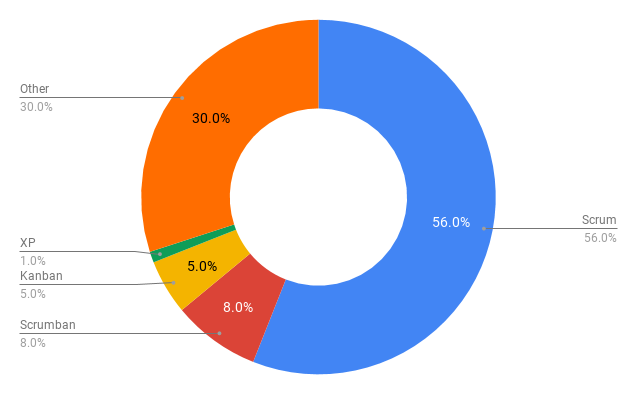
Scrum is a well-known and widely used Agile project management methodology framework.
Scrum is one way to apply Agile in your team or organization, but it’s not the only way. Using Scrum does indicate that you are following Agile principles.
Let us look closer at the relationship between Scrum, Agile, and other Agile methods.
Agile is a widespread philosophy highlighting adaptability, collaboration, and trade management.
It locations a top class on humans and interactions, purposeful software, purchaser collaboration, and adaptability to alternate.
Scrum is famous for its simplicity and effectiveness in managing complicated initiatives. Its method enables groups to be aware of priorities and hold ordinary conversations during daily Scrum conferences.
Choosing the Right Approach
Your Team’s Needs: The desire of whether to apply Scrum, Kanban, XP, or every other Agile approach relies upon your team’s particular wishes and the nature of your initiatives.
Adapting to Change: Agile methods let you adjust your technique as you analyze what quality works for your crew.
Mix and Match: In exercise, teams may also mix factors of various Agile techniques to create a hybrid method that fits their dreams and workflows.
Finally, the goal of any Agile method is to provide value to customers via continuous improvement and feedback.
Scrum is a good starting point, but you should be open to other Agile methods as your team grows and evolves.
Scrum vs. Kanban
Kanban is named after a Japanese word meaning “signboard.” This method uses a board (either virtual or physical) with columns that show different stages of a project.
As the project moves forward, a card or sticky note representing the project is shifted to the next stage until the project is done. This setup makes it easy to see the process and identify delays.
Kanban is different from Scrum because it doesn’t rely on fixed timelines. Kanban allows work to be done continuously without pre-assigning roles like product owners.
Some project managers combine elements of Scrum and Kanban in a hybrid approach called Scrumban.
Scrum vs. XP
Scrum and Extreme Programming (XP) are agile methodologies used in software development, but their method and attention fluctuate.
It organizes work into fixed-duration sprints, usually lasting 2-four weeks, and emphasizes roles consisting of Scrum Master, Product Owner, and Development Team.
The framework consists of ceremonies like daily stand-ups, sprint planning, and dash opinions, prioritizing flexibility and flexibility based on comments and changing necessities.
XP employs test-pushed improvement (TDD), pair programming, and continuous integration to enhance code first-class.
XP teams often paint in brief cycles, liberating software programs usually to take advantage of speedy comments and make improvements.
While Scrum handles the improvement method, XP specializes in first-rate practices for developing tremendous software programs.
Many teams can also combine factors of both methodologies to create a tailor-made technique that fits their undertaking wishes.
Want to Automate Your Business Process With a Software Solution?
Zennaxx, a leading software development firm in Canada, has delivered 700+ bespoke solutions spanning various industries.
Agile vs Waterfall
Agile and Waterfall are distinct venture management methodologies, each with its own strengths and demanding situations.
It is an iterative technique that promotes adaptability and collaboration.
Work is split into small, doable chunks called iterations or sprints, which commonly last a few weeks.
Teams paintings closely with stakeholders to prioritize obligations and regulate plans as wished.
Agile promotes common comments and continuous development, enabling groups to reply speedily to changing requirements. Projects with perplexing or converting requirements benefit significantly from this system.
The Waterfall is a linear method that divides tasks into wonderful phases: requirement accumulating, design, implementation, trying out, and deployment.
Each section has to be finished before shifting directly to the following, making it a more dependent and sequential process.
Waterfall works nicely for initiatives with properly described necessities and clean deliverables. It can be much less bendy and conflict with house adjustments once a segment is finished.
How to Learn Agile and Scrum?
Understanding the essential principles and practices of Agile vs Scrum methodologies and gaining hands-on enjoyment through training and practice are required to learn them.
Here are some steps to help you get began:
Learn the fundamentals
Begin with the primary concepts of Agile vs Scrum, which include the Agile Manifesto, Scrum roles, occasions, and artifacts. Understand the ideas and practices of each method.
Take Online Courses
Enroll in online Agile and Scrum training courses. These publications frequently include interactive physical activities and exams that will help you apprehend the cloth higher.
Read and Watch
Explore books, articles, videos, blogs, and webinars approximately Agile and Scrum. This will provide you with various perspectives and insights from enterprise professionals.
Practice and Reflect
Use your understanding of actual international or facet initiatives to gain sensible experience.
Seek remarks from peers and mentors and reflect on your experiences in an effort to constantly enhance your understanding and performance.
You can master Agile and Scrum methodologies by combining theoretical knowledge with practical experience and continuous learning.
Conclusion
It is a basic comparison between the software development methodology Agile vs. Scrum and other popular methodologies.
This information helps new developers understand the brief concept of software development methodology.
We aim to provide the correct information to freshmen developers and college students looking to understand the different methodologies available in the software development industry.
Developers can choose the approach that may be most effective for their projects by having a thorough understanding of these methodologies.
FAQs about Agile vs Scrum
- What is the difference between Agile and Scrum?
- Agile is a general approach to project management that emphasizes adaptability and iterative development, whereas Scrum is a specific Agile methodology with defined roles, events, and processes.
- When should I use Agile over Scrum?
- Agile is ideal for projects with ongoing tasks, changing requirements, and the need for flexibility in planning and execution. It is also appropriate for industries that require frequent adjustments.
- What are the leading roles in Scrum?
- Scrum has three key roles: the Scrum Master, who facilitates the process; the Product Owner, who manages the product backlog; and the Development Team, which carries out the tasks.
- Can Agile and Scrum be combined with other methodologies?
- Agile and Scrum can be combined with other methodologies like Kanban or Extreme Programming (XP). Many teams adopt a hybrid approach based on their project needs and preferences.
- How can I determine which methodology is best for my project?
- Consider your project’s specific requirements, the need for flexibility, and the structure of your team. Agile may be more appropriate for ongoing projects with changing needs, whereas Scrum provides more structure and defined roles for managing complex projects.






